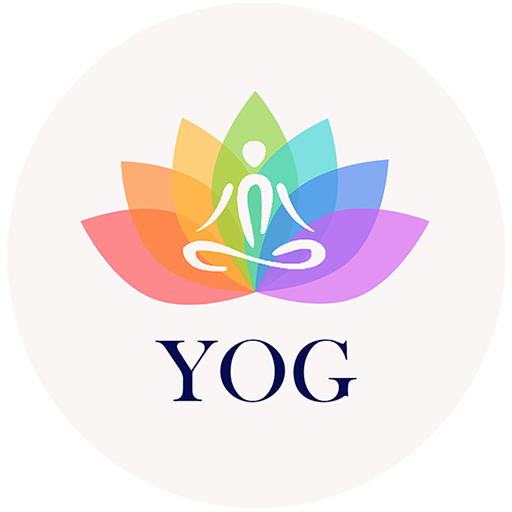Bid Farewell to Cervical Pain with the Healing Power of Yoga
Cervical pain – we’ve all been there, right? It’s that unwelcome companion that affects many of us, causing discomfort and impacting our daily lives. It’s one of the most commonly reported musculoskeletal issues globally, and the numbers don’t lie. According to a study delving into chronic pain conditions, a whopping 41.1% and 37.3% of folks in developing and developed countries respectively reported chronic neck pain. And here in India, where we have our unique challenges, a significant 19.3% of the population deals with chronic pain.
In a more localised study conducted in a small urban primary health center, 3.11% of the population reported neck pain. Interestingly, the pain seemed to be more of a companion in the age group of 21–40 years, closely followed by those in the 41–60 years bracket.
Causes of Cervical Pain?
1. Desk Job
People with jobs that require prolonged sitting or extensive computer use often find themselves grappling with cervical pain. The continuous strain imposed on the neck from staring at screens or hunching over keyboards can lead to tension and discomfort.
2. Bad Posture
One of the primary culprits behind cervical pain is poor posture. Whether at the desk, in front of the TV, or even while reading a book, maintaining incorrect postures puts undue stress on the neck. Slouching or craning the neck forward can lead to muscle imbalances and chronic discomfort.
3. Aging Impact
As the years roll by, our bodies undergo natural changes and the neck is no exception. Aging contributes to wear and tear on the spinal discs, which act as cushions between the vertebrae. Over time, these discs may dry out and shrink, leading to reduced flexibility and increased discomfort in the neck.
Understanding these factors helps us comprehend that cervical pain isn’t exclusive to a particular group; it can affect individuals from various walks of life. For anyone spending long hours in an office, struggling to sit up straight, or gracefully growing older, the common occurrence of neck pain highlights the importance of taking proactive steps to ease and prevent discomfort.
There are different ways to ease neck pain, such as Yoga and Stretching Exercises, Physical Therapy, Heat and Cold Therapy, Medication, and Acupuncture. But before trying anything, it’s important to talk to a healthcare professional, especially if the neck pain persists or is severe. Keep in mind that everyone responds differently to treatments, so getting personalised advice from a healthcare provider is crucial for managing neck pain effectively and safely. Your health matters and it’s best to trust an expert for guidance.
How Yoga Provides Relief from Cervical Pain
Yoga, with its gentle and precise poses, serves as a potent ally in easing cervical pain. Let’s jump into how yoga effectively helps you find relief from cervical discomfort.
1) Alleviate Cervical Discomfort: Through specialised yoga poses, learn to release tension and discomfort in your neck.
2) Reduce Strain on the Neck: Discover postures that promote better posture, reducing strain on your neck and shoulders.
3) Mindfulness for Mental Ease: Engage in mindfulness practices that not only ease physical pain but also contribute to mental well-being.
4) Enhance Body Support: Strengthen your back and improve overall body support with tailored yoga instruction.
FAQs
Can you explain what “Text Neck” is, and should I be concerned about it?
“Text Neck” is a term used to describe neck pain and damage stemming from looking down at mobile devices for extended periods. While it may sound minor, the consistent strain can lead to long-term issues. It is considered serious as it can contribute to poor posture, muscle imbalances, and even structural changes in the spine over time. The workshop can provide valuable guidance on preventing and managing “Text Neck” through practical strategies and exercises.
How can I prevent cervical pain?
Maintain good posture, practice neck exercises, take regular breaks during prolonged sitting or computer use and ensure proper ergonomics in your workspace.
What are the common symptoms of cervical pain?
Symptoms may include neck stiffness, pain or discomfort, headaches, shoulder pain, and limited range of motion in the neck.
Can stress contribute to cervical pain?
Yes, stress can lead to muscle tension and contribute to cervical pain. Stress management techniques such as meditation, deep breathing, and relaxation exercises may help.
How long does it take to recover from cervical pain?
The duration of recovery varies based on the cause and severity of cervical pain. Mild cases may improve in a few days, while more chronic conditions may require ongoing management and lifestyle changes.
Can yoga help relieve cervical pain?
Yes, certain yoga asanas (poses) can be effective in alleviating cervical pain. Gentle neck stretches, such as the Marjaryasana (Cat-Cow) stretch and Neck Tilts, along with overall relaxation poses like Child’s Pose, may help improve flexibility and reduce tension in the neck and shoulders. However, it’s crucial to practice under the guidance of a qualified yoga instructor, especially if you have an existing cervical condition. Consult with your healthcare provider before starting any new exercise regimen.
Don’t miss the chance to bid farewell to cervical pain. Join Najeeb Sayed’s Cervical Pain Relief Workshop and discover the joy of feeling better, both in your body and mind. Sign up now for a session focused on understanding and alleviating the challenges associated with cervical pain.


